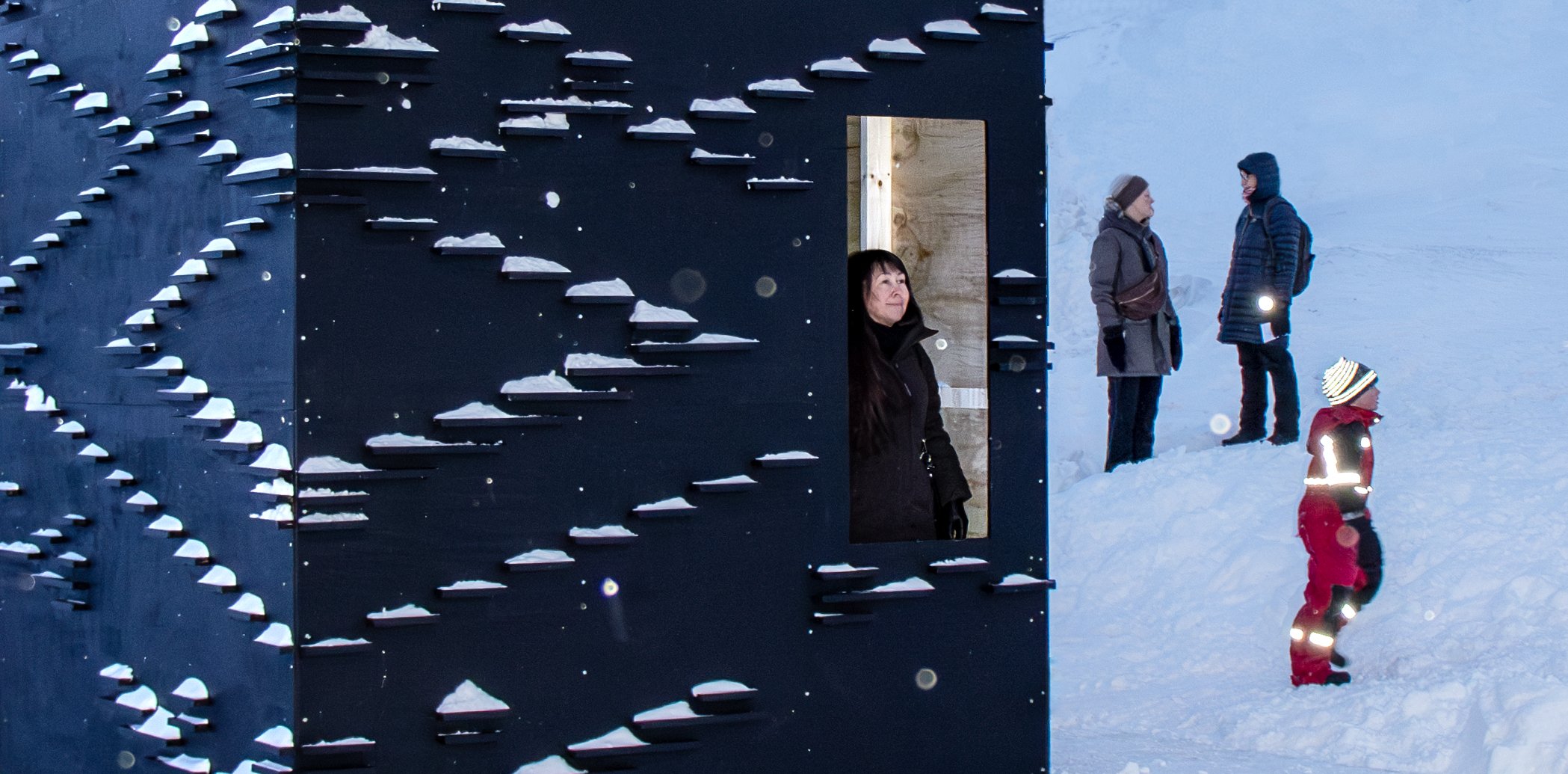House of Snow
House of Snow Exterior with view towards the Ilussiat Icefjord Icebergs
The House of Snow in Ilulissat, Greenland uses and documents the snow’s ability to stick to surfaces when pushed and driven by wind and humidity. The motif found on the surface of the structure comes from traditional Avittat embroidery traditions and is used to create a 3-dimensional surface that "invites" snow to make predefined patterns. The building’s appearance constantly changes and reminds us of the beauty of wind and snow and the power and abundance of natural materials that can be used in the construction of architecture.
House of Snow with Zion Church
The form of the House of Snow references the historic Zion church and is located on a strip of land between the historic Zion church and the Disko Bay. It's a protected zone in which no one is typically allowed to build because at times the water level rises to cover this particular piece of land, however, because this installation is temporary it is permitted. The structure is situated on the land where the church originally stood but has since been relocated about 50 meters further inland to protect it from flooding. Because of this history, the House of Snow can be seen as a memorial to the church, which is one of the reasons the structure harkens to a religious monument and has a temple-like form.
Close up of snow catching shelves
Avittat is considered to be one of the finest forms of embroidery in Greenlandic arts and crafts and has been transformed here to create the pattern on the surface of the building. In avittat, dyed sealskin leather strips of a few millimeters in size are sewn on a white or black piece of seal skin and create colorful expressions of identity. All of the avittat patterns start with a square grid, and each block in the grid is assigned a color that ultimately makes a pattern. The pattern on the House of Snow started with a very simple diagram from a pattern book and was transformed to be more horizontal to take advantage of the available lumber. Therefore, it is not a copy, but rather a design that has been inspired by avittat and transformed to suit the medium and the material resources at hand.
The House of Snow during a fresh spring snow
The House of Snow has a hidden door and an exposed window. The door faces the street and has the show-catching shelves on it so the pattern is not broken, when you get close to the building you can see the door, but from a distance, you cannot. Visitors can go inside and be protected from the wind while they look out and enjoy a framed view of the icebergs calving off of the glacier.
The House of Snow in the absence of snow
PROJECT DATE: 2024
The House of Snow has been developed by Virginia San Fratello with support from San José State University in collaboration with Ronald Rael, Jamie Principe, the Arctic Culture Lab, and Ilulissat Art Museum with support by STARK A/S Ilulissat and ST & SØN ApS with permission by Avannaata municipality and the National Museum of Greenland.





